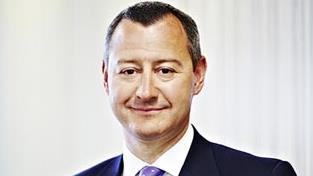Duncan Owen, global head of real estate at Schroders, says instinct suggests a market correction is on the way, although it is wrong to assume real estate cycles are fixed.

In the firm's Outlook 2019 report, Owen notes it should be remembered that cycles have varied enormously over the years.
‘Intuition suggests that markets are due a correction, but it would be wrong to assume that real estate cycles are fixed like the tides,' he says. 'History shows that the length and strength of upswings has varied enormously across different cities and sectors over the last 50 years.’
Nevertheless, he also points out that no one would be surprised if in a year’s time, the market discovered it had already peaked. If that is the case right now, 2019 could be a year offering buying opportunities.
Owen says the European commercial real estate faces two main risks. Firstly, the growth of populist parties across Europe has increased the chance of radical shifts in economic policy. The obvious example is Brexit, which poses a threat to financial services and office rents in the City of London and the Docklands. Conversely, this has given a modest occupational boost to office demand in Frankfurt and Paris. In addition, Catalonia’s declaration of independence has raised a question mark over assets in Barcelona, while the Italian government’s budget dispute with the EU has hit foreign investor interest in Milan and Rome.
The second clear risk is higher interest rates. Schroders expects the Bank of England and the European Central Bank to raise base rates and the refinancing rate to 1.75% and 1% respectively by the end of 2020. Yet, despite textbook theory that real estate yields should move in parallel with government bond yields, Schroders thinks any increase in office and logistics yields over the next 2-3 years will be limited to 0.25-0.4%.
‘We do not expect a bigger increase in office and industrial yields, partly because there is still a generous gap of over 3% between average investment grade real estate and government bonds,' Owen says. 'The long-term average is only 2%. Globalisation, particularly at the prime end of the market is also a factor. Asian, North American and Middle Eastern investors, with varying costs of capital, together accounted for a quarter of European investment deals by value in the first nine months of 2018, compared with 17% a decade ago.’
Retail, however, could be the one sector where yields rise, and capital values fall more sharply.
He says Schroders still sees value in parts of the European commercial real estate market. The upswing in office and industrial rents has further to go in most ‘winning cities’ and some segments such as hotels where management agreements are attractive.
But the company concludes the big concern is the current economic and market cycle. Owen remarks, ‘Whilst we may not be at the peak of market pricing, no one would be surprised in a year’s time if we discovered we are in reality there now. Therefore, 2019 could be a year of price corrections which may offer some good opportunity for investors who are well capitalised. There is more than one real estate cycle in Europe.’










